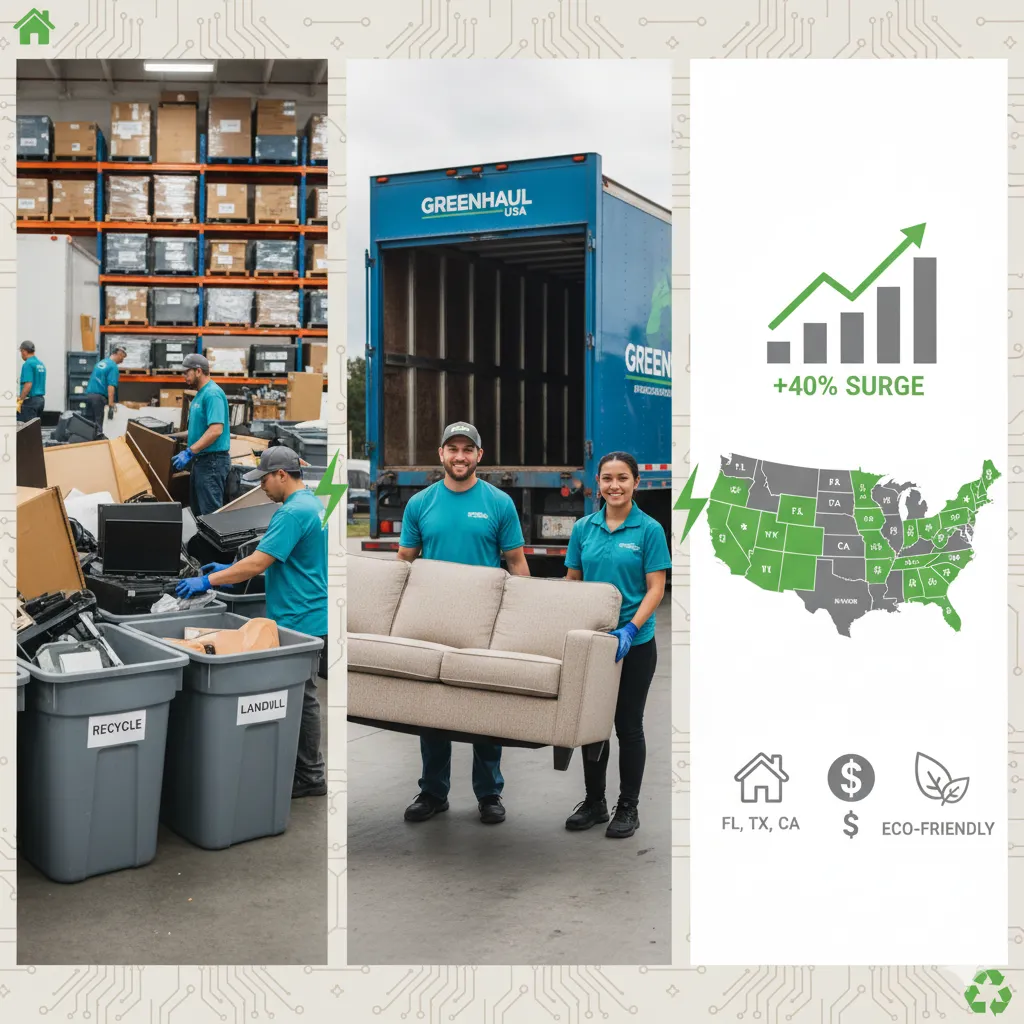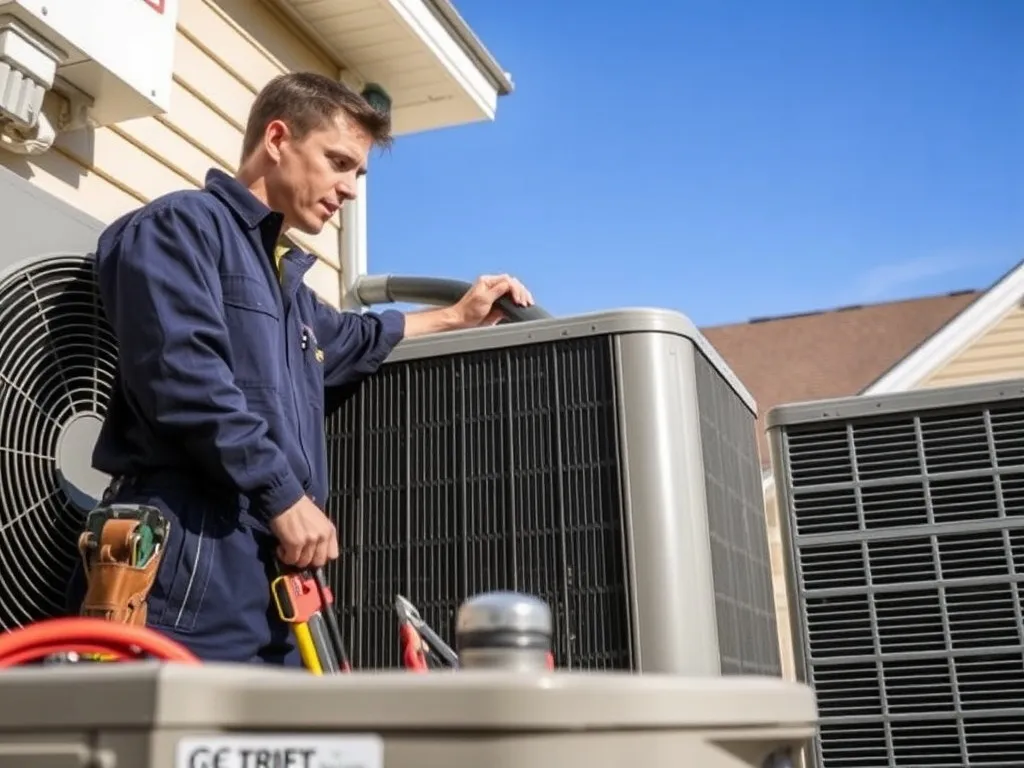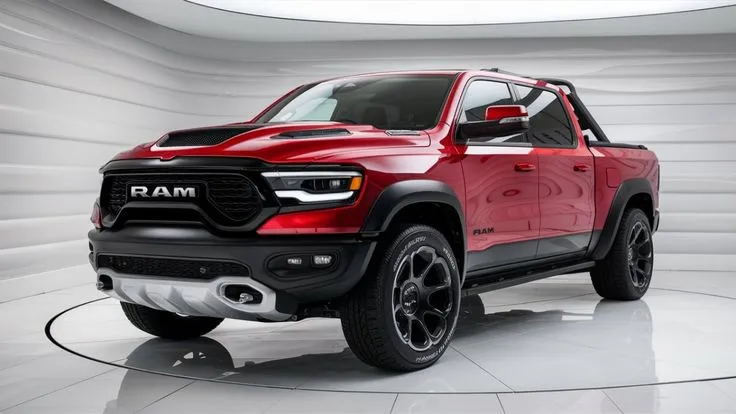New Report Shows 40% Surge in Junk Removal Bookings in 2025
In a surprising shift across U.S. households, a new industry report reveals a 40% surge in junk removal bookings in 2025, marking one of the strongest years of growth for this fast-rising home service sector. With Americans embracing decluttering, sustainable disposal, and convenient on-demand services, junk removal companies are quickly becoming a staple of modern home maintenance.
This report, compiled by the American Home Services Association (AHSA), analyzed over 1.2 million transactions from major junk removal platforms between 2023 and 2025. The findings show a significant rise in consumer demand — especially for eco-friendly disposal and same-day pickup options.

1. A $12 Billion Industry Fueled by Convenience
Once a niche market for movers or renovators, the junk removal industry has exploded into a mainstream service category, now valued at over $12 billion annually. Experts attribute this rise to the growing focus on convenience, home organization, and sustainability.
“We’re seeing more homeowners than ever outsourcing cleanouts — not because they can’t do it, but because they value time and efficiency,” said Laura Peterson, senior analyst at AHSA.
Online platforms like 1-800-GOT-JUNK, Junk King, and local independent contractors have made the process seamless. With real-time booking apps and transparent pricing, consumers can now schedule pickups within hours instead of days.
2. Why Americans Are Spending More on Junk Removal
Several key factors are driving the spending boom:
- Post-pandemic lifestyle changes: Americans are decluttering as remote work increases home usage.
- Rising home renovation rates: Remodeling projects generate large volumes of debris and waste.
- Eco-conscious habits: Consumers prefer recycling and donation options over simple dumping.
- Aging population: Older adults are hiring professionals for downsizing and estate cleanouts.
According to the AHSA report, nearly 65% of junk removal clients in 2025 are first-time users, signaling a massive influx of new customers discovering the convenience of professional disposal services.
3. The Rise of Eco-Friendly and Donation-Focused Services
The report also highlights a shift toward eco-friendly junk removal practices.
Roughly 58% of U.S. junk removal companies now advertise recycling partnerships or donation programs with local charities.
Items such as furniture, electronics, and appliances are increasingly diverted from landfills.
In fact, over 45% of all collected materials in 2025 were either recycled or repurposed — a 20% increase from 2022.
“Our customers want to know their items aren’t just being dumped,” said Mark Douglas, CEO of GreenHaul USA. “They’re paying for peace of mind — knowing their waste has a second life.”
4. Same-Day Pickup and Digital Booking: The New Norm
Convenience remains the top deciding factor for consumers.
Over 70% of all junk removal bookings in 2025 were made through mobile apps or online platforms, with the majority requesting same-day or next-day pickup.
This digital-first model mirrors the transformation of other service industries like ride-sharing and food delivery.
Companies using GPS tracking, upfront digital quotes, and flexible scheduling have reported up to 50% higher retention rates than traditional phone-based businesses.
5. Regional Growth: Which States Are Leading the Trend?
The AHSA report shows that demand for junk removal is highest in states with rapid urbanization and housing turnover.
Top five growth states in 2025:
- Florida (+52%) – Driven by population growth and real estate booms.
- Texas (+47%) – Large-scale residential construction and relocations.
- California (+43%) – Sustainability-driven cleanouts and eco initiatives.
- New York (+41%) – High-density urban waste and apartment renovations.
- Illinois (+39%) – Expansion of local service startups and better logistics networks.
Meanwhile, rural areas saw moderate but steady adoption — especially where new junk removal franchises entered small markets.
6. The Cost of Clean: What Americans Are Paying in 2025
With growing demand, prices have also inched upward.
Average national rates in 2025 are as follows:
- Small load (1/8 truck): $125–$160
- Half truck: $275–$350
- Full truck: $550–$750
Eco-friendly or donation-focused services typically charge a 10–15% premium, reflecting higher sorting and recycling costs.
Despite the rise, 87% of surveyed customers rated professional junk removal as “worth the price,” citing time savings, safety, and environmental responsibility.
7. DIY Disposal vs. Professional Junk Removal
While do-it-yourself dumping may seem cheaper, most consumers underestimate the hidden costs — including truck rentals, fuel, disposal fees, and time investment.
Professionals offer clear advantages:
- Proper waste handling and recycling compliance
- Labor for heavy lifting
- Licensed and insured operations
- Faster turnaround times
As AHSA analyst Peterson explains,
“It’s not just about getting rid of junk — it’s about doing it safely, legally, and efficiently.”
8. How Junk Removal Companies Are Marketing Smarter
The marketing landscape for junk removal has evolved rapidly.
Companies are investing in Google Local Services Ads, Performance Max campaigns, and organic SEO targeting searches like “junk removal near me” and “same-day hauling.”
Social media platforms like Facebook Marketplace and Nextdoor have also become key lead generators, where local homeowners share recommendations for fast and affordable junk services.
Brands emphasizing local expertise and transparency — instead of just low prices — are seeing the highest conversion rates.
9. Challenges Facing the Industry
Despite record growth, junk removal businesses still face challenges:
- Rising fuel and landfill fees affecting profit margins
- Labor shortages for skilled hauling crews
- Local regulations on electronic waste and hazardous materials
- Increasing competition driving pricing wars in major cities
Experts predict consolidation may occur over the next three years, with regional franchises merging under larger national networks.
10. The Future of Junk Removal: Smarter, Greener, and Faster
The future of junk removal looks firmly rooted in technology and sustainability.
Industry forecasts suggest:
- AI-driven scheduling systems to optimize routes
- Electric trucks for lower emissions
- Dynamic pricing models based on real-time demand
- Broader corporate partnerships with recycling and donation centers
By 2027, analysts project the U.S. junk removal market could surpass $17 billion, driven by the continued push for eco-conscious living and efficiency-driven lifestyles.
Conclusion: A Clean Future for a Growing Industry
The surge in junk removal bookings across 2025 highlights a larger cultural shift: Americans are prioritizing simplicity, sustainability, and time-saving solutions in their homes.
Whether it’s a quick garage cleanup or a full property overhaul, junk removal services have transformed from a side industry into an essential part of the modern home economy.
As more people recognize the value of outsourcing clutter, one thing is clear — America’s junk problem is turning into one of the nation’s cleanest business opportunities.











